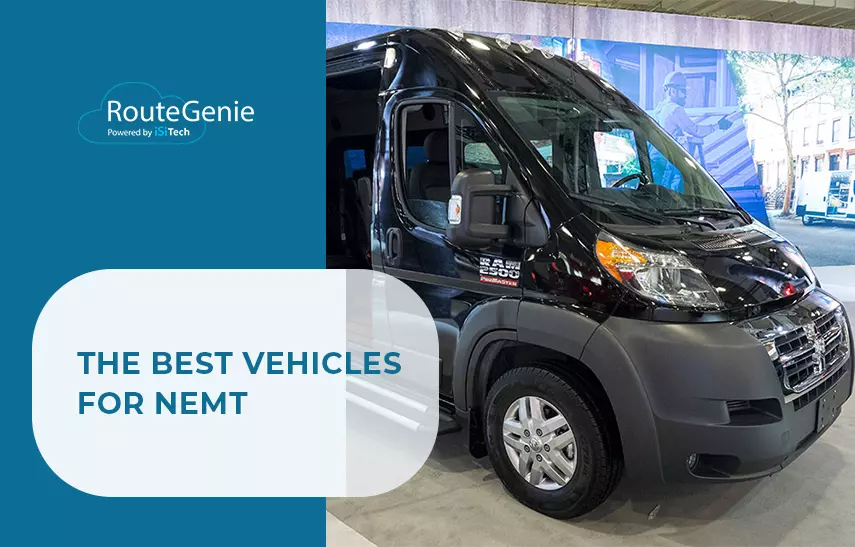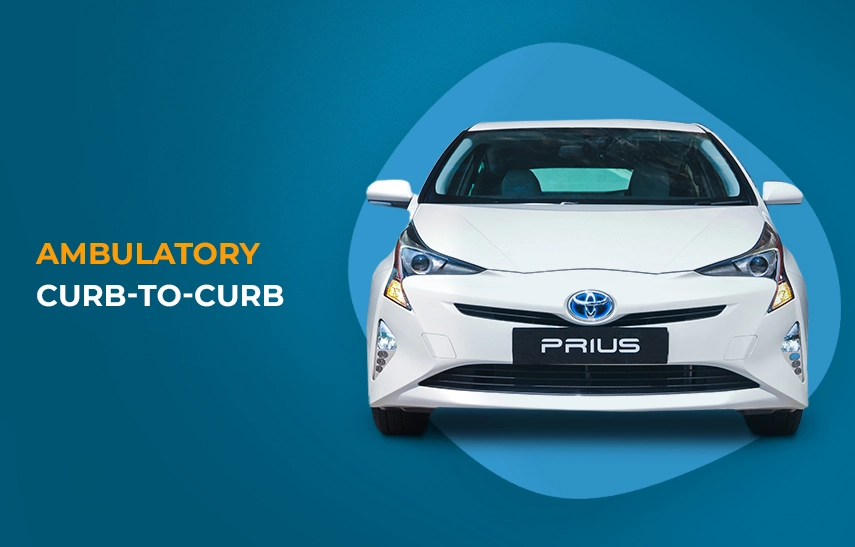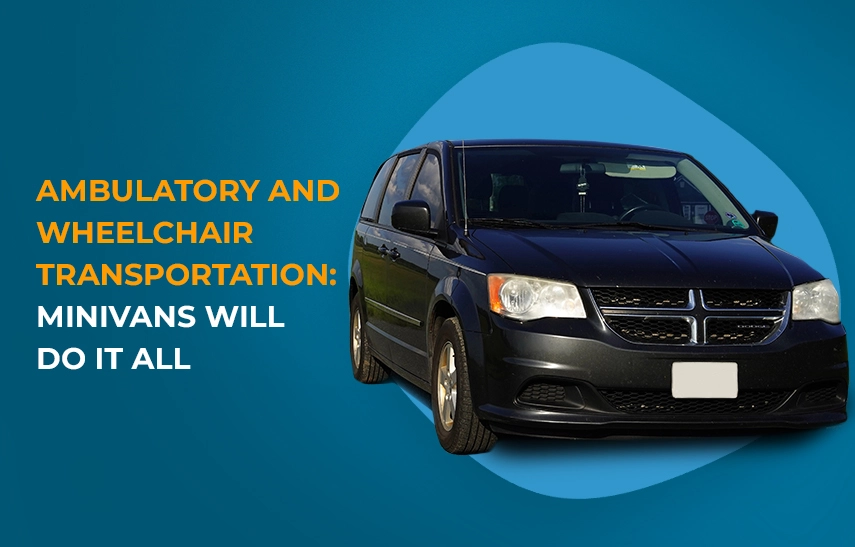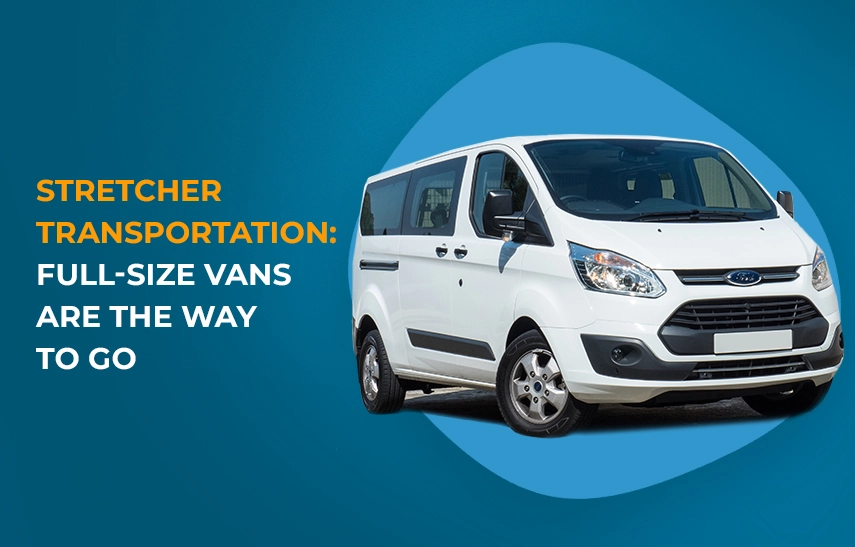Best Vehicles for Non-Emergency Medical Transportation (NEMT): Top-Selling Models with Prices and Specifications

Deciding to join the non-emergency medical transportation (NEMT) industry is an exciting and rewarding career path. Every day, you have the opportunity to help someone in need by providing transportation. No matter where you’re located, there are people who either can’t drive themselves or don’t have access to a vehicle, leaving them vulnerable to missing important healthcare appointments. NEMT addresses this problem and reduces the number of missed appointments, helping both the individual and the healthcare industry as a whole. If you’re thinking about getting into NEMT service, there’s a lot to learn. But one of the biggest things you’ll have to decide is what type of vehicle to purchase.
Contents:
- What Vehicles Are Suitable for NEMT
- Ambulatory Curb-To-Curb
- Ambulatory and Wheelchair Transportation: Minivans Will Do It All
- Stretcher Transportation: Full-Size Vans Are the Way to Go
- Bottomline
- Comparison Table of the Top NEMT Vehicles within Each Category
What Vehicles Are Suitable for NEMT
There are a few different kinds of vehicles you might use for your non-emergency medical transportation business, but it all depends on what type of transport you’re conducting. If you’re only doing ambulatory, you can use your personal vehicle or any standard vehicle. However, if you’re planning on doing a wheelchair, stretcher, or any other transport that requires special equipment, you’ll need a compatible vehicle in your fleet.
If you would like to learn about the major requirements and regulations when it comes to non-emergency transport, check out our comprehensive article on this topic: How to Choose a Perfect Vehicle for NEMT: Requirements and Factors to Consider.
The following is a more focused guide with some of the types of transportation you might do throughout your career. We will make sure to match the right vehicle type with an actual car brand and model, showcase its capabilities and features, and list an estimated price for a new or used operational unit in good condition. Bear in mind that we will be listing MSRP prices for the new vehicles and average prices for the used vehicles not older than 7 years and with less than 100,000 miles on the odometer (prices acquired from cars.com).
Ambulatory Curb-To-Curb

If a person is able to walk themselves and doesn’t require any additional support, they can request ambulatory curb-to-curb transport. This is the simplest type of NEMT and can be fulfilled with any vehicle that can legally be on the road. If you’re only looking to do curb-to-curb trips, you might be able to use your personal vehicle and avoid purchasing a new vehicle altogether.
The most popular vehicles in this class are mid- and full-size sedans, compact and mid-size crossovers, SUVs of various sizes, station wagons, and roomy hatchbacks.
Advantages: variety of vehicles, great fuel economy (select any drivetrain: gasoline, diesel, hybrid, all-electric), no need for additional investment if you choose to operate your everyday driver.
Disadvantages: limited availability of orders, if you operate your own vehicle, it will suffer rapid depreciation.
Toyota Prius: High Reliability and Low Fuel Consumption
Since ambulatory non-emergency medical transportation is the closest match to regular taxi cab service, the most obvious vehicle choice is a Toyota Prius. Owing to its hybrid electric powertrain, this hatchback has one of the lowest fuel consumption ratings in the industry of 58 mpg in the city and 53 mpg on the highway. Toyotas are widely regarded as the most reliable and safest cars in the industry. They have a robust network of dealerships and service centers across the US. This model has proven itself over the past 27 years on the market as an unbeatable workhorse with a roomy cabin and a cavernous boot of 23.8 cubic-feet of space.
Ambulatory and Wheelchair Transportation: Minivans Will Do It All

Minivans are easily the best vehicles for non-emergency medical transportation. They are ideal for curb-to-curb contracts and also belong to the most affordable car class that can be equipped with a manual or automatic wheelchair ramp. Therefore, a smaller van is capable of completing up to 90 percent of all NEMT contracts.
If you’re transporting a wheelchair passenger, you will need to modify your MPV with a ramp, security restraints and hookups. You can’t risk any instability during the trip.
NOTE: There is a possibility to convert a smaller van to fit a gurney, but the interior will be extremely cramped. Full-size stretcher vans listed below are better vehicles for this job.
Advantages: wide availability of proven models, sliding doors, ease of cabin access, captain chairs, possible multi-passenger trips (up to 2 wheelchairs or 6 passengers), cheapest vehicles to install a wheelchair ramp, can complete the majority of medical transportation contracts.
Disadvantages: higher fuel consumption and price compared to other passenger vehicles, still somewhat small for wheelchair-accessible van contracts.
Here are the most popular NEMT minivans:
Dodge Grand Caravan: Fan Favorite but Discontinued
The Caravan and its longer wheelbase sibling, the Grand Caravan, were manufactured between 1984 and 2020. It was eventually discontinued by Dodge after the corporate restructuring when Stellantis took over, but through the years, it has been one of the favorite fleet vehicles in the USA.
Medical transportation providers value the Caravan for its powerful 3.6-liter Pentastar V6 engine, high reliability, low maintenance cost, customizability, availability of conversion shops that specialize in this model, roomy interior, 3-zone climate control, and a 56-inch sliding door.
Bear in mind that during its last years on the market, this Dodge was exclusively sold as a fleet vehicle, so do not be tricked by extremely low prices; they might indicate a poor condition of the vehicle.
Toyota Sienna: Japanese Workhorse
The Sienna is a close second within NEMT fleets. It is favored for its reliability and the option of all-wheel drive, which can be particularly useful in areas with harsh weather conditions. It has a slightly higher price point but offers a good balance of fuel efficiency, safety, and advanced technology features, backed up by Toyota’s vast and reliable service network.
Units released up until 2019 are powered by a 3.5-liter V6 with nearly 300 horsepower. The latest 2020+ models of Sienna, however, swap the V6 for a slightly less powerful 245 HP strong hybrid drivetrain, but it has unmatched fuel efficiency of 36 MPG. Additionally, newer models are equipped with advanced Safety Sense active safety features. All in all, its spacious interior and high safety ratings make it a strong contender in the NEMT industry.
Honda Odyssey: A Technological But Expensive Choice
The Honda Odyssey is often considered the most advanced in terms of technology and comfort, but it also has the highest price compared to the other two best-sellers. Like a true Honda, it has an incredibly reliable engine, a competitive fuel economy of 22 MPG, and high safety ratings. Its higher price is explained by good value for its features, including superior in-car entertainment, advanced Honda Sensing safety systems, standard tri-zone climate control, and power liftgate, as well as Honda’s ingenious Magic Slide 2nd-Row Seats. Lastly, after a recent cameo in the new Deadpool and Wolverine movie, the credibility of the Honda Odyssey is expected to rise even further.
Chrysler Pacifica AKA Voyager: Last American Minivan
In essence, this is a more premium version of the fan favorite Dodge Grand Caravan and the last minivan manufactured by an American company. The most recent Chrysler MPVs are marketed under the Pacifica and Voyager monikers, and as claimed by Chrysler themselves, these are the most awarded minivans of the last 7 years. Besides the classic set of MPV features, a trustworthy 287 hp 3.6 V6 and an available AWD version, the Pacifica has one more ace up its sleeve. It is the only compact van with an optional plug-in hybrid powertrain on the market. This model has an all-electric range of 32 miles, a combined MPGe of 82 and an estimated total range of up to 520 miles.
Other Worthy NEMT Minivan Choices
Ford Transit Connect: This Ford was discontinued in 2023 by Blue Oval due to the falling demand. It might return in the future as an all-electric model. Most of the Transit Connect models were released in the cargo variant, so the availability of passenger versions might be limited. It uses a smaller 2.5-liter 4-cylinder engine, so owners can expect slightly better fuel economy, albeit a sacrifice of power.
Kia Carnival (previously known as Kia Sedona): This is an up-and-coming vehicle from South Korea with a steadily rising reputation. Kia’s major advantages are the lower entry price, better value, and great looks. The older V6 engines have ample power but an average combined MPG rating of 21. The upcoming hybrid powertrain is expected to rectify this issue by providing a 32 MPG fuel rating. The latest models of the Carnival adopted a more SUV-like design, making it the best-looking people’s hauler on the market. It has the best-in-class passenger and cargo space, an available Slide-Flex seating system, 17 safety systems, and dual 12.3-in Panoramic Displays.
Stretcher Transportation: Full-Size Vans Are the Way to Go

There are a variety of reasons why a patient might be bedridden or confined to a stretcher. If this is the case, you’ll need a special vehicle to safely transport passengers on stretchers and gurneys. A person in need of stretcher transportation will likely need door-to-door transportation, so your driver will have to go into the client’s home and then into their appointment with them. Just like wheelchair transport, your vehicle will need restraints and hookups to prevent any movement during the trip.
Stretcher transportation is a less common type of NEMT routine, only about 10 percent of orders will require the transportation of patients who need a gurney van. Despite the possibility of converting minivans to accommodate a stretcher, full-size vans are usually considered the only appropriate vehicle for stretcher trips. They have unmatched accessibility and unlimited conversion potential. The major advantage is the ability to accommodate heavy-duty, remote-controlled wheelchair lifts and ramps.
Advantages: robust ladder frame, longer lifespan of a vehicle, high payload capacity, possible multi-passenger shuttle trips with passenger capacity up to 12-15 passengers, capacity to accommodate up to 6 wheelchair passengers and they won’t feel cramped, can fit a gurney and an accompanying person, easily convertible floor plans to fit extra equipment, availability of more expensive NEMT contracts.
Disadvantages: higher price, fuel consumption, and maintenance costs compared to MPVs, possible downtime or necessity to alter your business model to ensure no vacancy and more cost-effective operations.
Chevrolet Express/GMC Savana: A Reliable Duo from GM
This duo of GM vehicles has been in production since 1996 in a single generation, with over 2.5 million units sold. Vans based on the GMT610 chassis with a full-length ladder frame are among the longest-produced designs in American automotive history. This old age does make them quite outdated, but on the other hand, all of the reliability issues have been resolved, and all of the quirks are well known to the maintainers. Express and Savana gurney vans are brought to life by a 4.3L V6 or a 6.6L V8. It is reasonable to go for the V6-powered models since 276 horsepower and 298 lb-ft of torque is plenty, but the 15.5 MPG vs. 12 MPG will benefit your medical transport company’s budget.
Ford E-Series Van: Discontinued but Still Loved
Ford discontinued sales of the E-Series passenger and cargo vans back in 2015 to allow the Ford Transit to consolidate the market. However, due to the popularity of the platform, it continues to be sold as a cutaway chassis. There are plenty of aftermarket workshops that are ready to install a second-party rear body to fit your business needs. Since over 8 million units of the E-Series have been sold since 1961, there is no shortage of used models and spare parts.
Unlike the GM vans, Ford has been gradually updating the E-Series throughout the years, so you can expect more technological cabins and a variety of engines. The latest models have a rather gas-hungry 7.3L V8 Godzilla naturally aspirated engine with 12 MPG, but older units might be available with more efficient diesel and gasoline mills convertible to CNG or LPG (propane autogas).
Ford Transit: Best-Selling American Van
Despite being originally developed for the European and Australian markets all the way back in 1965, the Transit arrived to the United States only in 2013 effectively replacing the E-Series. It immediately overwhelmed the competition and became the best-selling van, regardless of the size. The Ford Transit van is available in rear and all-wheel drive, numerous wheelbase lengths, and roof heights.
On the used market, you will find models with various gasoline and diesel engines. The 2020+ MY will likely be powered by a 3.5L PFDi V6 engine or a 3.5L EcoBoost® V6 engine. The former is more economical with slightly lower output but a better-combined MPG of 17, while the former is Ford’s newest entry with 16 MPG and 310 horsepower. Finally, we should not forget about the all-electric E-Transit; it has 160 miles of range and, in the long run, might be the most economical van for short-distance NEMT trips.
Ram ProMaster: American Fiat Ducato
It has been a decade since RAM introduced a rebadged version of one of Europe’s best-selling vans. This van was tasked with counterbalancing the Ford Transit, just like its Fiat Ducato sibling has been doing in Europe for countless years. This Italian-American Ram ProMaster van can be bought in the 118 through 159 inch lengths with low, high and super high roofs.
The sole engine option is basically the same 276 horsepower 3.6-liter Pentastar V-6 that is used on the Dodge Grand Caravan. It is exclusively a front-wheel drive vehicle with a 15–16 MPG rating. The ProMaster is expected to have rather modern interior and driver assistance tech, and in 2025 it will get an all-electric version labeled Ram ProMaster EV.
Mercedes-Benz Sprinter: Honorable mention
This is the most expensive medical transport van platform on today’s market. High initial cost is what’s stopping providers from adding them to their fleets. However, the availability of all-wheel drive, extremely high reliability, and the presence of the latest safety and driver convenience features make the Sprinter a very desirable NEMT van.
Bottomline
Once you venture on the path of non-emergency medical transportation, you take up great responsibility for the well-being of your customers. It will be up to you and your NEMT business to provide reliable transportation and make sure that passengers do not miss their medical appointments, receive medication on time, and, most importantly, safely and comfortably commute between their homes and medical facilities.
To fulfill this mission, you will need reliable, well-equipped, and regularly maintained non-emergency medical transport that matches the basic requirements, regulations and market demands for the NEMT field. We listed the major car models you should consider for your fleet, but as with any vehicle purchase, you should follow the best practices. Check out our short article on How to Buy an NEMT Vehicle: Step-by-Step Guide.
As an NEMT business owner, you will have to work hard to find the best NEMT vehicles for your fleet. Besides matching your business profile and goals, they must be comfortable and safe for the passengers. Do your own research by visiting websites that aggregate feedback about vehicles and test their safety ratings. The most popular and trustworthy platforms are J.D. Power, Kelley Blue Book, Consumer Reports, Car and Driver, IIHS-HLDI and NHTSA.
Explore new trip opportunities with routing software. No matter what NEMT segment you choose to operate in, the right software can potentially supercharge your earnings by providing the most efficient scheduling, routing, billing, and dispatching. RouteGenie is non-emergency medical transportation software that does that and so much more. Anyone set on improving your operation, sign up for our free demo today to see the product in action!
Comparison Table of the Top NEMT Vehicles within Each Category
|
Model |
MSRP New |
Used* |
Combined MPG (City/Hwy) |
Consumer Score** |
Passenger Capacity |
Wheelchair Capacity |
Stretcher Access |
|
Ambulatory Curb-To-Curb |
|||||||
|
Toyota Prius |
$27,950 |
$15,000 |
53 |
75/100 |
5 |
no |
no |
|
Minivans |
|||||||
|
Dodge Grand Caravan |
Discontinued in 2020 |
$11,000 |
21 |
78/100 |
7 |
2 |
no |
|
Toyota Sienna |
$39,135 |
$18,000 |
24.5/36 |
78/100 |
8 |
2 |
no |
|
Honda Odyssey |
$41,920 |
$19,000 |
22 |
74-80/100 |
8 |
2 |
no |
|
Ford Transit Connect |
Discontinued in 2023 |
$16,000 |
26 |
NA |
8 |
2 |
no |
|
Kia Carnival (Sedona) |
$38,350 |
$15,000 |
22 |
78-80/100 |
8 |
2 |
no |
|
Chrysler Pacifica/Voyager |
$39,645 |
$13,000/$18,000 |
22/82 |
72/100 |
8 |
2 |
no |
|
Full-size Stretcher Vans |
|||||||
|
Chevrolet Express/GMC Savana |
$40,700 |
$18,000 |
12/15.5 |
NA |
5/12/15 |
2-6 |
yes |
|
Ford E-Series Van |
$37,790 |
$16,000 |
12 |
NA |
8/12/15 |
2-6 |
yes |
|
Ford Transit |
$47,165 |
$19,000 |
16/17 |
NA |
8/10/12/14/15 |
2-6 |
yes |
|
Ram ProMaster |
$44,405 |
$22,000 |
15/16 |
NA |
6/12 |
2-6 |
yes |
|
Mercedes-Benz Sprinter |
$53,195 |
$28,000 |
19 |
NA |
12/15 |
2-6 |
yes |
*Prices listed for the used models are the lowest starting price for a 7-year-old vehicle with mileage below 100,000 miles. Data obtained from cars.com
**Consumer score is based on the data obtained from J.D. Power

